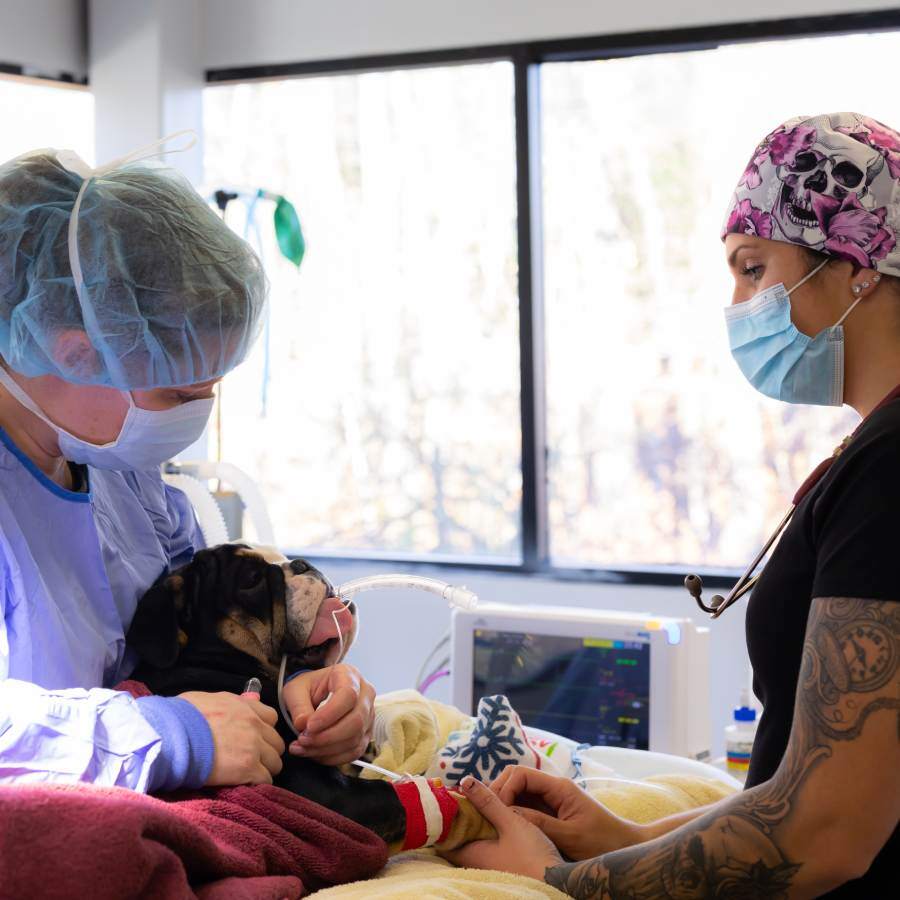
Pet Digital Radiography in Kingston, NH
Plaistow-Kingston Animal Medical Center is proud to offer digital radiography services for your pets. Learn more below.
Call us today at 📞 (603) 642-9700
Pet Digital Radiography

Diagnostic radiography is an imaging technique that has long been used in identifying medical problems ranging from bone fractures to lung masses. Radiographs (X-rays) are, in the simplest terms, two-dimensional photographs obtained by the projection of a controlled stream of radiation through the area to be examined.
Traditional X-rays were always projected onto film, but the process has changed in that radiographic images are now projected to a sensor, which is, in turn, digitally processed by a computer. The quality of the images can then be manipulated in the computer, which leads to fewer retakes and less exposure to radiation for the patient and staff. The resulting images are transferred to our PACS (Picture Archiving and Communication System) server so they can be retrieved by any computer in our hospital or transferred electronically to offsite veterinary specialists for review. These images can also be copied onto CDs and sent home with the pet’s owner.
In most cases, radiographs can be obtained without sedation or anesthesia. The patient is placed on its side, stomach, or back (depending upon the areas of the body to be viewed) atop the X-ray table, and two technicians gently manipulate the patient beneath the projector according to the veterinarian’s specifications. An X-ray (or series) is then taken, and the resulting images are transferred automatically to a computer console in another room, where the attending veterinarian is waiting to view and diagnose.
Sometimes sedation or even general anesthesia may be required to perform an X-ray, especially in extremely fearful or painful patients. These patients are usually sent home the same day, following full recovery from the drugs, unless further treatment is indicated.
Get Care
© Plaistow-Kingston Animal Medical Center | Privacy Policy



